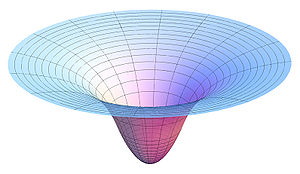Ultron
Registered Senior Member
I have question about one weird aspect of General relativity.
Lets imagine, that we have two twins with atomic clocks. One twin stays on Earth and second twin will be transported in space module in free space without gravity. And the space module will start to rotate and the second twin will live for 1 year in rotating space modul in form of cylinder, where the centrifugal force will be equal to 1 g.
After one year they will meet again and their atomic clocks will have the same time, because based on the general relativity they had the same time dilation on Earth surface with 1g and rotating space module with 1 g.
But lets move to the second example. The first twin will use fictional elevator to get to the center of Earth and will stay there in fictional module floating around without gravity. The second twin will get to the space module and will have the rotation set to achieve 3 g.
After one year they will meet again and their atomic clocks will have the same time, because based on the general relativity they had the same time dilation in Earth center with 0 g and rotating space module with centrifugal force 3 g.
Sounds weird? Yea, it sounds definitely weird for me, but what I know, this is the current interpretation of equotations of GR meaning that time dilation on Earth is not related to force of gravity, but to gravitational potential. Meaning that the time dilation in center of Earth is bigger than time dilation on surface. This is pure theory, because while time dilation was confirmed for surface of Earth and above it, it was never confirmed for situations below surface and unfortunately it is practically impossible to check it experimentally.
What is your view on it? Im I right with the example?
Lets imagine, that we have two twins with atomic clocks. One twin stays on Earth and second twin will be transported in space module in free space without gravity. And the space module will start to rotate and the second twin will live for 1 year in rotating space modul in form of cylinder, where the centrifugal force will be equal to 1 g.
After one year they will meet again and their atomic clocks will have the same time, because based on the general relativity they had the same time dilation on Earth surface with 1g and rotating space module with 1 g.
But lets move to the second example. The first twin will use fictional elevator to get to the center of Earth and will stay there in fictional module floating around without gravity. The second twin will get to the space module and will have the rotation set to achieve 3 g.
After one year they will meet again and their atomic clocks will have the same time, because based on the general relativity they had the same time dilation in Earth center with 0 g and rotating space module with centrifugal force 3 g.
Sounds weird? Yea, it sounds definitely weird for me, but what I know, this is the current interpretation of equotations of GR meaning that time dilation on Earth is not related to force of gravity, but to gravitational potential. Meaning that the time dilation in center of Earth is bigger than time dilation on surface. This is pure theory, because while time dilation was confirmed for surface of Earth and above it, it was never confirmed for situations below surface and unfortunately it is practically impossible to check it experimentally.
What is your view on it? Im I right with the example?


